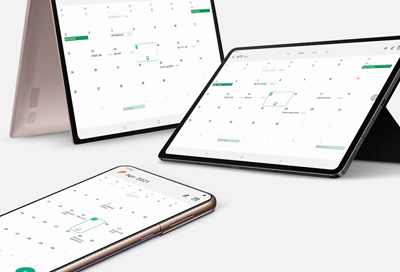
Synced: Understanding Synchronization Across Devices
Did you know that 67% of users switch between devices in a single day for various tasks? Understanding how synchronization works across these devices can significantly impact your digital experience.
As you navigate through the interconnected world of syncing technology, you’ll uncover the benefits and challenges that come with it.
Stay tuned to discover how synchronization can enhance your digital connectivity and streamline your daily activities seamlessly.
The Importance of Synchronization
Understanding the importance of synchronization is crucial for seamless connectivity and efficiency across all your devices. By ensuring that your devices are synchronized, you can access the latest versions of your files, emails, contacts, and calendars from any device at any time. This means you can start a task on one device and easily pick up where you left off on another, without any disruptions or delays. Synchronization also helps in keeping your data consistent and up to date across all platforms, preventing any discrepancies or confusion that may arise from using outdated information.
Moreover, synchronization enables you to stay organized and productive by centralizing your data management. You can avoid the hassle of manually transferring files or information between devices, saving you time and effort. This streamlined process not only enhances your workflow but also reduces the risk of errors or data loss. Embracing synchronization technology is essential in today’s fast-paced digital world, where efficiency and connectivity are paramount for success.
How Syncing Technology Works
To grasp how syncing technology works seamlessly across your devices, it’s important to understand the underlying mechanisms that facilitate this synchronization process. When you make changes on one device, such as adding a new contact or editing a document, these modifications are saved to a central server or cloud storage. This server then communicates these changes to your other connected devices through the internet.
Syncing technology uses protocols like CalDAV, CardDAV, or Exchange ActiveSync to ensure that data is updated in real-time across all your devices. These protocols govern how information is shared and updated between devices, maintaining consistency and accuracy.
Furthermore, syncing technologies often employ a process called data mapping, where data fields are matched between devices to ensure proper synchronization. This mapping helps reconcile any discrepancies in data formats or structures between different devices.
Benefits of Device Syncing
Synchronize your devices and enjoy the seamless benefits of data consistency and accessibility. By syncing your devices, you can ensure that all your information is up to date across all platforms. Imagine starting a task on your computer and then seamlessly picking up where you left off on your smartphone while on the go. Device syncing eliminates the hassle of manually transferring files or information between devices, saving you time and effort.
Another key benefit of syncing devices is the ability to access your data from anywhere. Whether you’re at home, in the office, or traveling, having synchronized devices means you can retrieve important files or information whenever you need them. This level of accessibility enhances your productivity and efficiency, allowing you to work more effectively without being tied down to a specific device.
Furthermore, device syncing can help ensure that your data is backed up regularly. By syncing your devices to the cloud or other storage solutions, you can safeguard your information against loss or damage, providing you with peace of mind knowing that your data is secure and easily retrievable.
Challenges in Cross-Device Sync
Facing occasional connectivity issues can disrupt the seamless synchronization of your devices. When your devices struggle to connect to the internet or encounter unstable network signals, syncing data across them becomes challenging. These interruptions can lead to inconsistencies in your files and information, causing frustration and potentially impacting your productivity.
Moreover, compatibility issues between different operating systems or software versions can hinder smooth cross-device sync. For instance, a file created or edited on one device may not display correctly on another due to format discrepancies. This can result in data loss or the need for manual adjustments to ensure information consistency across all your devices.
Security concerns also pose a significant challenge in cross-device synchronization. Transmitting sensitive data between devices requires robust encryption protocols to safeguard information from potential breaches or unauthorized access. Ensuring that all your devices adhere to stringent security measures can be complex and time-consuming but is essential for maintaining data integrity and confidentiality across your synced devices.
Enhancing Digital Connectivity
When striving for a seamless synchronization experience across your devices, maximizing digital connectivity becomes imperative. Enhancing digital connectivity involves optimizing your network settings to ensure smooth communication between your devices.
One way to achieve this is by utilizing cloud services, enabling you to access your data from anywhere while keeping it updated in real-time across all your devices. Additionally, integrating all your devices within the same ecosystem, such as using products from the same brand, can streamline connectivity and synchronization processes.
Investing in high-quality routers and ensuring proper network security measures are also vital steps in enhancing digital connectivity. By maintaining a secure and robust network infrastructure, you can prevent interruptions in synchronization caused by connectivity issues or cyber threats.
Moreover, regularly updating your devices and applications can improve compatibility and performance, further enhancing the overall synchronization experience. Embracing these strategies won’t only boost your digital connectivity but also contribute to a more efficient and seamless synchronization across all your devices.
Conclusion
Overall, synchronization across devices is crucial for seamless digital experiences. By syncing our devices, we can access our data and information effortlessly, no matter where we are.
While there may be challenges in achieving perfect synchronization, the benefits far outweigh the drawbacks. As technology continues to advance, it’s important to embrace cross-device syncing to enhance our digital connectivity and make our lives more efficient and convenient.
So keep syncing and stay connected!

